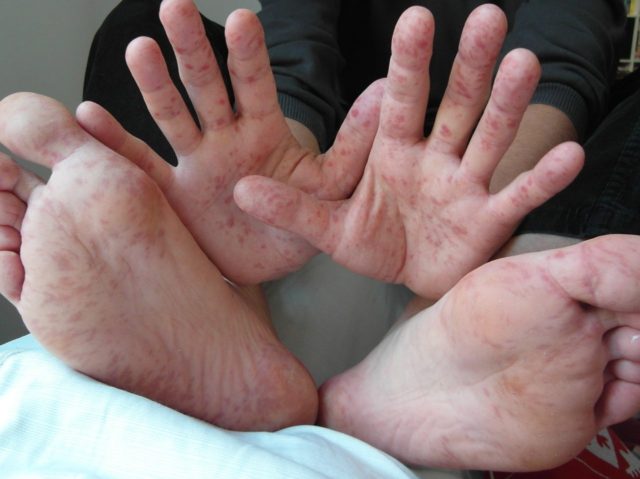The highly contagious and painful hand, foot and mouth disease (HFMD) is spreading across campuses at American universities, according to an infectious disease expert at University of California Berkeley.
“This represents a silent epidemic because people don’t know they have the virus, and we don’t know these people have the virus,” Dr. Fenyong Liu, told KRON 4 News.
Two Florida universities (Florida State University and the University of North Florida), and the University of Illinois, have reportedly seen up to three dozen cases of HFMD over the past few months. The Associated Press reported last week that the University of Illinois has seen more than 60 cases of HFMD among students since the beginning of the semester.
HFMD is a virus that presents through the appearance of painful blisters on hands and feet. The illness is most commonly caused by the Coxsackie A16 virus, which is a member of a group of enteroviruses. It can be spread through fecal or oral transmission, which makes children’s daycare centers and college dorms common transmission areas.
There is no vaccine for HFMD. However, since it is viral, cleanliness may decrease the chances of contracting the illness, which usually lasts for up to 10 days after contact.
The virus has also elicited reactions on social media:
https://twitter.com/iamMrDuncan/status/787318319560871936
HMFD is sometimes confused with hoof and mouth disease, which only affects livestock like pigs, cattle and sheep. Both are caused by two entirely different viruses, and humans cannot contract the disease from animals or vice versa.
According to the National Institutes of Health, approximately 200,000 people in the U.S. contract the disease annually. However, Dr. Fenyong Liu told KRON 4 that many more than that carry the viruses associated with the disease.
Children with the disease are usually required to be kept home from school for several days.
Follow Adelle Nazarian on Twitter and Periscope @AdelleNaz

COMMENTS
Please let us know if you're having issues with commenting.